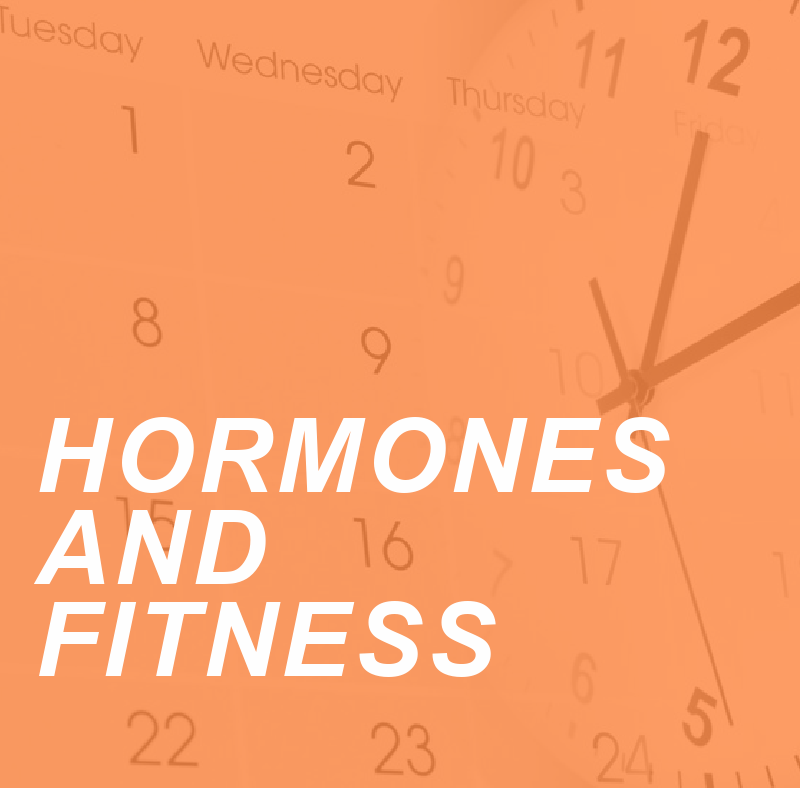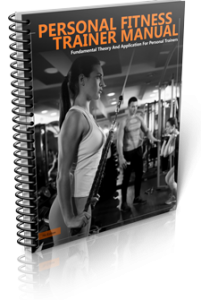
The relationship between hormones and fitness is complex and oft-ignored which may impact personal training client motivation and performance. Understanding it may help break through mysterious fitness roadblocks your clients are facing, especially women.
It would be nice if everyone could wake up every day feeling energetic, motivated, and ready to conquer the world. Or feeling like progress was made after every 5 AM fitness session. Unfortunately, our bodies function on their own terms that may not align with our best intentions and efforts to succeed. Some factors periodically keep us in check to let us know when to push and when to pull back.
As personal trainers, we need to be aware of the effect hormones may have on a client’s workout. The majority of trainers cultivate friendships, even a closeness, with long-standing clients. Some sessions end up with just as much talking and sharing as weight training. No matter how close we may feel to these individuals, there are often unspoken boundaries when it comes to certain topics. Birth control and even symptoms of hormonal imbalance can fall into this category; once we fully understand the possible effects hormonal contraception can have on a woman’s ability to exercise, how do we broach the topic if we suspect that impact is manifesting?
Hormone Cycles
Although men do experience hormonal changes, they typically have a predictable shift day to day, month to month, and mostly involving testosterone. In a nutshell, healthy men begin their day with highest levels of testosterone and levels decrease over the course of the day, dipping in the afternoon. Perhaps the most beneficial time for them to perform lifting routines would be earlier in the day when testosterone is high. (Although some camps argue lifting at night will help raise testosterone levels.)
Women on the other hand have several hormones (including testosterone!) that shift every day, all month, and at many different levels. As personal trainers we are likely to program for both men and women, but for now the focus will be on female hormones. Let’s dig deeper into how these hormone levels affect your female clients’ training and what you can do to help benefit their progress during these shifts.
The Science/Action of Progesterone
During a woman’s premenstrual phase, progesterone stimulates respiration through a variety of peripheral chemoreceptors. This leads to greater energy consumption by respiratory muscles that would otherwise be utilized for different muscular activities. Studies have proven how hormonal fluctuations have the potential to alter a female’s airways as well as the inflammatory responses of her lungs. As hormones rise and fall during a typical cycle, new blood vessels in the lungs form and disappear, affecting the lungs’ ability to take in oxygen.
Immediately following ovulation and during the premenstrual phase of the female cycle, pulse rates do tend to elevate. An uptick in circulating blood volume brought on by the thermogenic action of progesterone could be the reason for this increase.
The female hormone progesterone works as an antagonist, countering some of the effects of estrogen, another hormone of significance in a woman’s cycle. In theory, one might expect endurance to be greater in the latter part of a menstrual cycle, when estrogen levels enable the body to utilize fat as an energy source while sparing carbohydrates. However, many women experience a significant decrease in athletic performance during this time of the month. Scientists have noted that elevated levels of progesterone may actually act against the estrogen in women who are more sensitive to their bodies’ subtle shifts. It is believed that this comes about due to an increase in core body temperature.
Sensitive Bodies Exhibit Powerful Reactions
Hormone-based birth control methods work in part by mimicking the effects of early pregnancy. As it happens, a surplus of progesterone is present in a woman’s body during the first trimester, in order to build and sustain a thick uterine lining for the newly formed zygote. Many women experience bouts of labored breathing during these early weeks. As mentioned earlier, progesterone increases the amount of air inhaled and exhaled, which brings on this sensation.
As effectively as these birth control methods work, medical professionals often fail to inform patients of potential hazards associated with use. According to reports by Drugs.com and MedlinePlus, tachycardia, the medical term for a rapid heart rate, can occur as a serious side effect of progesterone therapy. A faster-than-normal heart rate has the potential of increasing the pressure of the blood as it travels through the cardiovascular system. Hypertension can produce life-threatening results, such as a stroke or heart attack. Progesterone use has also been reported to elicit a pounding sensation of the heart.
Recognizing Hormonal Symptoms
Trainers are accustomed to working with clients who suffer from hypertension, COPD, and sometimes arrhythmias. We would never hesitate to inquire about such medical conditions prior to taking on such a client. We know how to recognize potentially dangerous symptoms and take appropriate action. However, when such symptoms occur in an apparently healthy female who has disclosed that she is free of any cardiorespiratory complications, we typically would not consider birth control methods as the root cause.
Asthma, too, can be a hormone-related health issue. Hormones travel through the bloodstream as messengers. In proper balance, they help the body communicate and thrive. However, when hormone levels rise excessively in an otherwise healthy and fit woman, either due to early pregnancy or progesterone therapy, even well-controlled asthma can quickly turn into a medical emergency. We must be prepared to take action. If a new client reveals that she has asthma, suggest she carry her rescue inhaler with her during the workout.
While cases of cardiorespiratory challenges due to progesterone are rare, a little knowledge keeps trainers on their toes. The more we can learn about uncommon situations, the better we can deliver successful services to all of our clients.
What About Menopause and Hot Flashes?
When child-bearing years come to a slow halt, hormones shift yet again, causing a litany of effects that usually take women off guard, including and especially “hot flashes”. Experts seem somewhat conflicted as to the actual etiology of the hot flash.
According to research published in the Journal of Clinical Endocrinology and Metabolism, luteinizing hormone (LH) or the factors that trigger its pulsatile release are related to the mechanism responsible for the initiation of hot flashes. An analysis of simultaneous skin temperature and circulating LH levels showed a significant positive correlation (p less than 0.01). Follicle-stimulating hormone (FSH) levels, however, showed no consistent relationship with skin temperature.
Another study concluded that the increases in LH and FSH that occur during the early stage of the menopausal transition induce vasomotor instability, resulting in hot flashes. It should come as no surprise that, as conflicted as the medical community seems to be on this issue, women too are seemingly at odds as to how best to conquer the temperature war being waged within their bodies.
During menopause, the body produces less estrogen and progesterone. As a result, the thermostat in the brain, the hypothalamus, receives mixed signals. This hot vs. cold dilemma causes the blood vessels to expand and contract on an irregular basis. With increased blood flow throughout the body, a feeling of heat starts on the face, the neck, and continues to the chest.
This ‘flush” can vary in intensity from woman to woman: some may simply perspire, while others sweat profusely. Sometimes a chill follows a hot flash. Depending on the intensity of the hot flash, many women experience headaches, feelings of weakness, dizziness, and loss of sleep.
Striving for more holistic solutions for many health concerns, more women seem to be shying away from traditional hormone replacement therapy to ease their perimenopausal hot flashes. To that end, exercise has become at the forefront of treatment options in an attempt to mitigate hot flashes.
According to a study published in the ACTA Obstetrics and Gynecology in 2011, menopausal women who exercised regularly experienced hot flashes only half as often as women who were sedentary. The mechanism by which physical activity helps with hot flashes is most likely related to the hormonal response to exercise.
According to Barbara Sternfeld, Ph.D., the release of the calming hormone norepinephrine occurs after just one burst of exercise. This, paired with the physiological adaptation of a slower resting heart rate through regular exercise, keeps the body in a calmer state, lowering the incidence of hot flashes. Sternfeld also points out that an effect similar to a “runner’s high” can help the brain regulate temperature.
Exactly what modes of exercise seem to be the most effective at staving off hot flashes? Exercise for the menopausal woman should include both resistance training and aerobic components. According to the American College of Sports Medicine, a health-related exercise program should be comprised of aerobic training three to five days per week, and weight training two to three days per week.
As a side benefit, exercise can lower the risk for cardiovascular disease in general and strengthen muscle mass to prevent fractures, which is another risk factor that grows as estrogen levels decline, according to Barbara Bushman, a Professor of Health and Physical Education at Missouri State University and author of “Action Plan for Menopause.”
Women who don’t exercise also tend to have a higher percentage of body fat and weight, another factor that contributes to increased risk of hot flashes. In fact, one study demonstrated that women with a body mass index (BMI) over 30 had a higher incidence of hot flashes than those whose BMI fell below that number.
Female Hormones and Fitness
We know that hormones like testosterone play a role in how we exercise, grow muscles, and age. But there are more hormones at play that we typically don’t think about. Progesterone is a hormone found in pregnant women as well as a multitude of birth control devices. A normal part of a woman’s menstrual cycle, progesterone typically does not cause any problems. As with most generalities, though, there are exceptions to this.
Amending the Initial Assessment
Going forward with new clients may be an easier assessment adjustment to make. Our initial intake involves inquiring about medical history and medication. To avoid sounding invasive, you might consider adding a short blurb about how hormonal contraception containing estrogen may cause increased respiration and heart rate, and exacerbate symptoms of asthma. A yes or no answer to whether or not a female client is currently taking such hormonal birth control will then certainly be warranted.
For established clients who you may note exhibit more labored breathing or elevated heart rate than you expect for their level conditioning, you might share with them an article cited below or verbally mention how you have recently learned of this connection between hormonal therapies and exercise. You can alert her to the potential side effects that she otherwise may not have recognized.
First things first. Ask questions.
Is it okay to have a conversation with your female client with regard to their menstrual cycle? Yes.
Your client came to you for guidance in all areas fitness-related, so knowing what their body is doing not only with fitness and nutrition, but also with their cycle, is important. Should your client be on hormonal birth control/contraception, her situation may be slightly different. Find out when her cycle starts and ask her to track health habits for 1-3 months. Many fitness trackers also track menstrual cycles, which can be even more helpful. This will help you both determine energy levels, reveal nutrition relationships, and even sleep patterns.
Below are some key factors your female clients might track daily that will help in planning their sessions to benefit them most.
*When was the first day of her menstrual cycle and how long did it last?
*What are her training routines? Have her log what she does daily for workouts–all varieties including rest days.
*What was her energy level like for her chosen workout? Did she drag or was she energetic?
*What were her eating habits throughout the month? Did she eat balanced, nutrient dense foods or indulge at specific intervals?
*How are her sleeping patterns? Does she fall asleep easily and stay asleep, or awake during the night? Do number of total hours per night vary? Does she have interrupted sleep due to external factors (like children waking her up?)
*How were her moods? Happy, anxious, focused, or scattered?
How will answering these questions and tracking contribute to the end goal of becoming healthier? The answers to these questions are all clues to the complex and dynamic interplay of hormones your client experiences on a daily basis. Not only will tracking these things daily help her see patterns, it will educate you both on what kind of shifts in her routine will better fall in line with her natural hormone levels, lining her fitness routine up with how she is feeling any given day.
Looking for Patterns
First, divide the month in half: The first half “phase one,” second half “phase two.” Explaining the processes that take place during these phases will help your client get a better understanding of what her body is doing and over time you will learn to adjust the programming accordingly.
Phase 1
This phase begins the first day of their menstrual cycle and continues for approximately 15 days (some cycles may be longer or shorter). During this time, days 1-5 the hormones estrogen and progesterone are at a low; utilize this time with her to focus on low-impact/slow simple movements or even stretching sessions. Your client’s energy will likely be lower also, so program accordingly.
After this period is over your clients energy will begin to increase, estrogen begins to rise. On days 5-13 you can ease her back into the more intense strength training and perhaps longer cardio sessions. Take advantage of this time to work on “gains” as your clients will respond better physiologically. This is also an ideal time to use carbs as fuel. Your client will also have a short window where there will be a peak in their testosterone and progesterone together so get some heavy lift days in towards the end of this 13-day window!
Phase 2
Let the ovulation begin! Around day 14 estrogen peaks and progesterone is still high. Your client may feel “warmer”. Her metabolism is elevated; working out in a cooler climate or even swimming may be a good option for a few days. Days 15-28 are a great opportunity for some HIIT workouts as her body will be utilizing more fat for fuel than at other times of the month as progesterone starts to decrease. (Appropriate for fat-loss clients!)
Recommend or program one or two HIIT sessions mixed in with higher intensity yoga sessions as your client comes closer to the end of this month-long cycle. You may notice towards the end (around day 22) energy begins to decrease again little by little, so slowing back down and incorporating more traditional weight training sessions with rest periods would be ideal.
Ask regularly how your client is feeling energy-wise as you proceed throughout the month; sleep is often affected so be mindful of how she is recovering.
Hormones are Unique to the Individual
Each client is individual in every possible way. Even if they are on birth control or perhaps in menopause, it is important to program according to unique hormone fluctuations. This guidance is most appropriate for those not artificially altering the body’s hormonal balance, however it will still benefit to track consistently to get a good, if not better, understanding on how to train and progress your client.
If you are not comfortable asking such pointed and personal questions (certainly valid for a male trainer working with female clients), not all is lost. Gathering as much information in a professional manner is part of coaching and application.
References:
http://jeb.biologists.org/content/205/2/233
https://pdfs.semanticscholar.org/1eb0/805cc1559d531bc7f13d0f8424102ed20699.pdf
https://www.drugs.com/cdi/xulane.html
https://www.exerciseregister.org/blog/post/breaking%20through%20the%20taboo:%20the%20menstrual%20cycle%20and%20exercise%20performance/
ACTA Obstetrics and Gynecology Scandinavia “Does Physical Exercise Influence the Frequency of Postmenopausal Hot Flushes?” Mats Hammar, et al.; 2011
http://www.livestrong.com/article/372397-diet-exercise-for-hot-flashes/
Tataryn IV, Meldrum DR, Lu KH, Frumar AM, Judd HL “LH, FSH and skin temperaure during the menopausal hot flash” J Clin Endocrinol Metab. 1979 Jul; 49(1):152-4.
https://www.ncbi.nlm.nih.gov/pmc/articles/PMC5353821/
https://www.healthline.com/health/shortness-of-breath-early-pregnancy
https://www.health.harvard.edu/decision_guide/shortness-of-breath-in-pregnancy
https://www.plannedparenthood.org/learn/birth-control/birth-control-patch/what-are-disadvantages-patch
https://www.everydayhealth.com/progesterone/guide/
https://www.livestrong.com/article/524086-progesterone-heart-palpitations/









